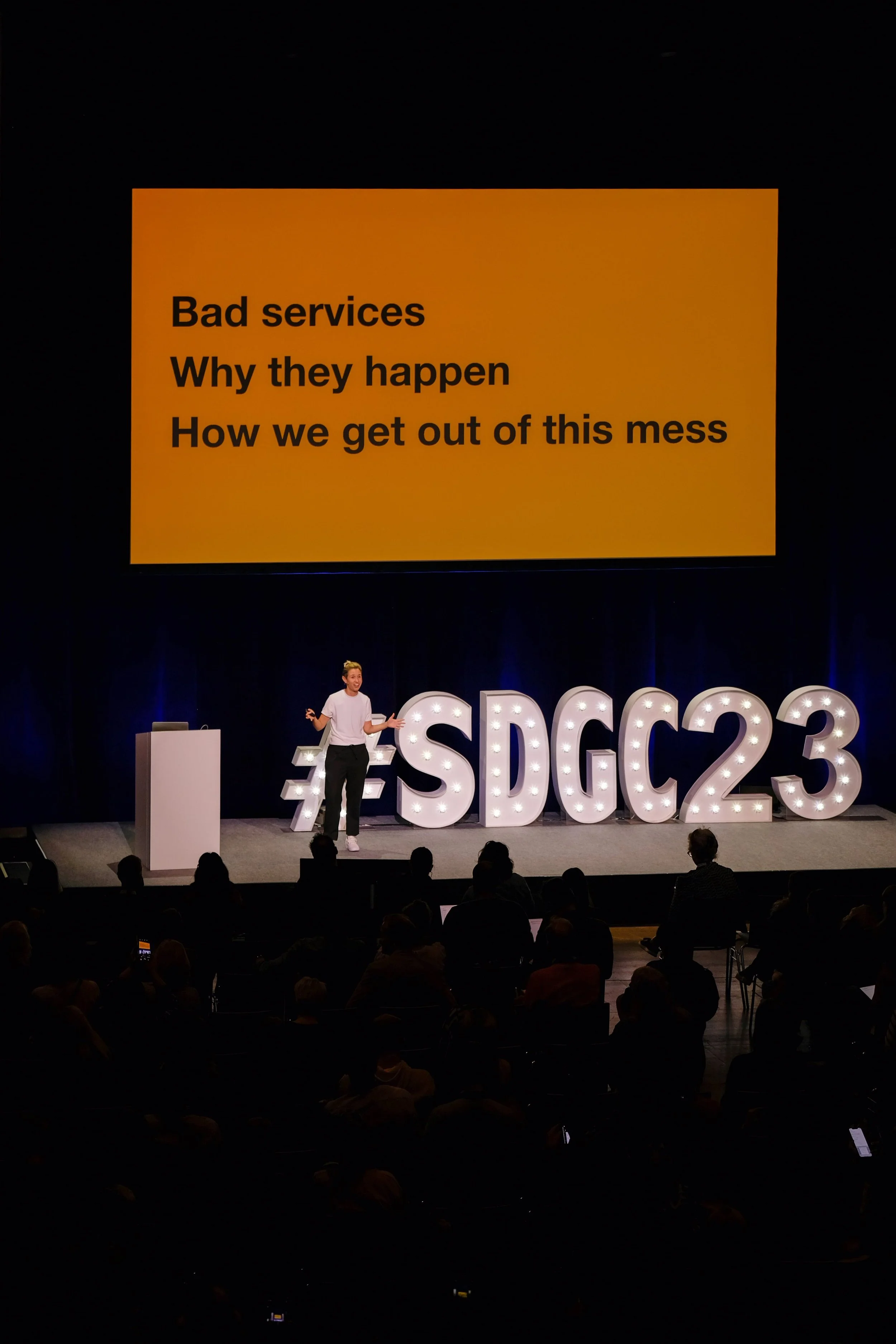Bad Services
We’re just back from a European trip talking at Service Design Network Global Conference and Servicios Digitales de Aragón’s Design and Citizenship conference.
What made this trip different was we added in one new important question;
Given that we know what makes a good service, why do we make bad services?
No one wakes up in the morning and says, ‘today, I am going to get out of bed, go to work, and make a bad services’, it’s almost never the case that services that don’t work do so deliberately.
Bad services happen as an accidental casualty of lots of things that go wrong inside organisations, namely when organisations don’t see services, don’t actively design them and they become into being without much conscious thought.
Whether it is how the organisation is structured, how they finance research and development, or what technology contract they use to deliver their service. There are 1000s of reasons services end up ‘bad’.
We’ve been training at the school now for over three years, and with Sarah and I’s collective 35 years of experience in service design and strategy we’ve started to see some big patterns in the things organisations do that create bad services.
We think naming the reasons bad services exist is important because it helps all of us involved in service design and delivery to be aware of what we can fix to help make good services.
To capture this thinking, I shared the exciting news at the Service Design Network Global Conference that I’m working on a new book.
It’s called Bad Services. Both of the talks I gave last week are about this really important topic so if you missed them, here’s a brief summary of what I talked about
Bad Services List
I’ve begun a list that I’m writing about on what makes bad services. These are the most common causes we’ve seen between us for services that simply don’t work:
You don’t know what your service is
You’ve forgotten why you’re doing what you’re doing
You don’t understand the constraints of your materials
The risk of doing something outweighs the risk of doing nothing
You’re trying to do too much with too little
Your organisation wasn’t structured to deliver services
Your staff have no autonomy
You have no idea how your services are performing
You incentivise the wrong behaviour
You think you can get away with it
Creating the conditions for service design is the work
What you’ll notice about this list is that none of them have to do with what we traditionally think of as the ‘work’ of service design.
I’ve said it before (many times!) but service design is about 10% design. The other 90% is creating the conditions for service design to happen and getting people to commit to this. Service Design isn’t just journey mapping, blueprinting, stakeholder mapping. It is a whole bunch of activities that go into bringing people around the focus on making good services happen.
Service Design all of the following, and that’s ok;
Thank you to the Service Design Network Global Conference for having me and Servicios Digitales de Aragón in Berlin and Zaragoza to talk about this evolving work.
If you want to follow updates on the book and our upcoming courses for 2024 you can sign up to our newsletter
Our upcoming public courses are in November and still have some spaces left on our agile service design training both in GMT and EDT time, leading stakeholders and building business cases. All course dates are on our website.





